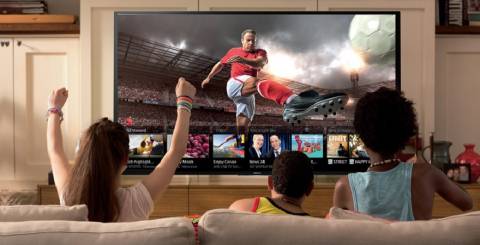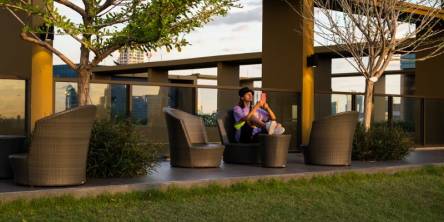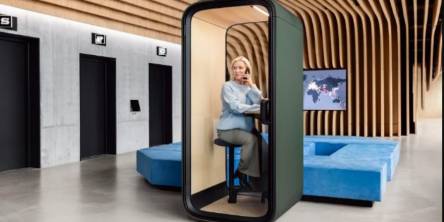Benefits of Home Theatre Systems

Home theatre is also called home cinema or theatre rooms. These home theatre systems are used as entertainment audio-visual systems that can produce a movie theatre experience using video and audio equipment at your place.
In the 1980s, home theatre consisted of a movie pre-recorded on a laserdisc; VHS player and a heavy, bulky large-screen cathode ray tube TV set. In the 2000s, innovations took place in sound systems, video player equipment, and TV screens. Video projectors changed the equipment used in home theatre set-ups and enabled users to experience at home a higher- resolution screen image, improved sound quality and components that offer users more options.
Today, home theatre systems typically use a large projected image from a video projector or a large flat-screen high resolution. A movie or other video content on a DVD or high-resolution Blu-ray disc is played on it with the audio augmented with a multi-channel power amplifier.
Design of home theatre systems:
Movie or other viewing content
One of the reasons for setting up a home theatre is to watch movies on a large screen which produces a filmed image of the vast landscapes. In 2016, home theatres used smart blue-ray players which enabled watching DVD’s of TV shows and recorded or live sports events or music concerts.
Video and audio input devices
One or more audio and video sources are used in a home theatre system. High-resolution movie media formats are preferred more. Some home theatres include an HTPC with media centre software applications to act as the main library for video and music content using a 10-foot user interface and remote control.
Audio and video processing devices
Input signals are produced by either a standalone AV receiver or a preamplifier. Sound processor for complex surrounds sound formats such as Dolby Pro-Logic and DTS-HD master audio. The user makes a selection of the input at this point before it is forwarded to the output stage. Some AV receivers enable the viewer to use a remote control to select the input device.
Audio output
Systems consist of preamplifiers, power amplifiers and two loudspeakers mounted in other speakers. The audio system needs at least a stereo power amplifier and two speakers for stereo sound. Maximum all systems have multi-channel surround sound power amplifier and six or more speakers.
Video output
A video output uses a large-screen display, typically an HDTV. Some users may have a 3D TV. A home cinema user makes use of a video projector and a movie screen. In case a projector is used, a portable, temporary screen can be used.
Seating and atmosphere
Comfortable seating is provided to improve the cinema feel. Usually home theatres commonly also have sound insulation to prevent noise from escaping the room and specialized wall treatment to balance the sound within the room.
Benefits of Home Theatre systems:
Get the same movie-going experience without the hassle
When you have a home theatre of your own, you don’t have to find a parking place or wait in line to buy tickets or buy overpriced popcorn. You can choose the best seats in the house and bring whatever food you like.
Take video games to a new level
In a home theatre, gaming becomes a whole new game. Video games become more immersive with life imagery and realistic surround sound. Playing video games in a home theatre is a different experience.
Complete reign over the remote control
When you go to the movies, you can’t stop the movie when you need to go to washrooms or grab another drink. When you have your own theatre, you are the king of your domain. You can stop the show, rewind the show or watch a long movie over the course of two nights.
Increase the value of your home
According to an article in the New York Times, a properly designed and installed home theatre can boost your home’s value.
Similar Articles
The exterior of your home is the first thing to deal with the elements and with each season, your home will be challenged in a certain way.
Most pests enter homes through cracks, gaps, or food sources, but bed bugs take a very different path
Every yard has challenges — a slope that limits space, soil that shifts after rain, or uneven ground that makes it hard to enjoy.
A skillion roof garage is a modern and practical solution for homeowners and property owners who need extra storage or workspace
Bathrooms have transformed over the last few decades. Once seen as purely functional spaces, they are now designed as retreats — private sanctuaries for relaxation, reflection, and rejuvenation.
Your backyard holds untapped potential. Right now, it might be nothing more than a patch of grass, a few scattered plants, or an underutilized space that you glance at through your kitchen window.
Enhance productivity and privacy by transforming your workspace with a soundproof phone booth—ideal for calls, focus, and modern office needs.
As families grow, the need for more space becomes inevitable. Deciding whether to renovate your current home or relocate to a larger one involves careful consideration of financial and logistical factors
Painting a house sounds simple. Pick a color, grab a brush, and go. But one big step often gets skipped. That step? Pressure washing.









